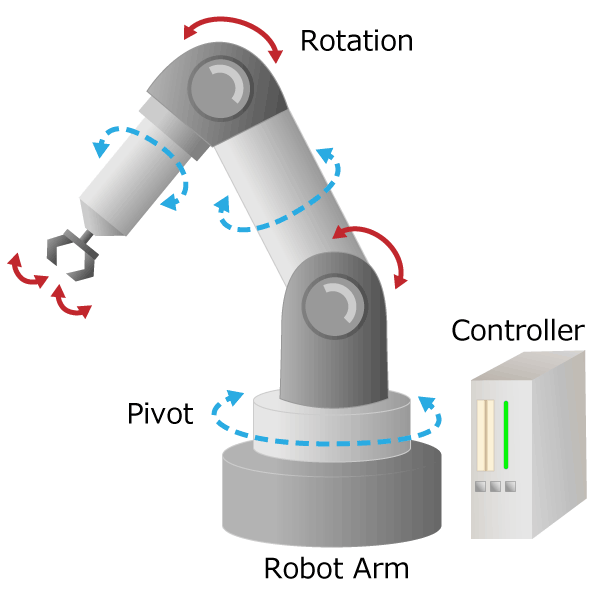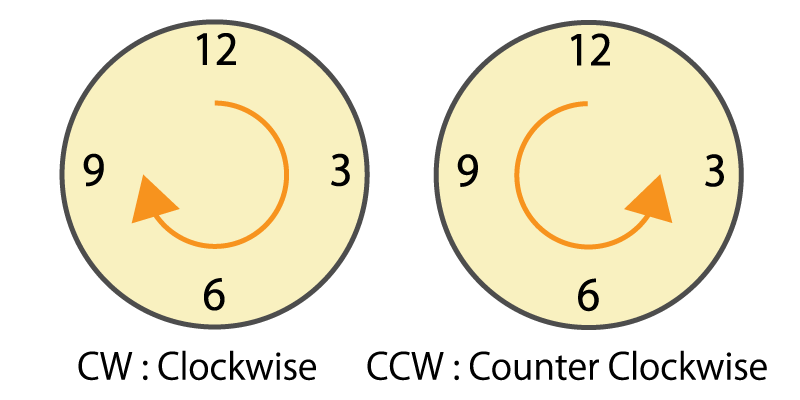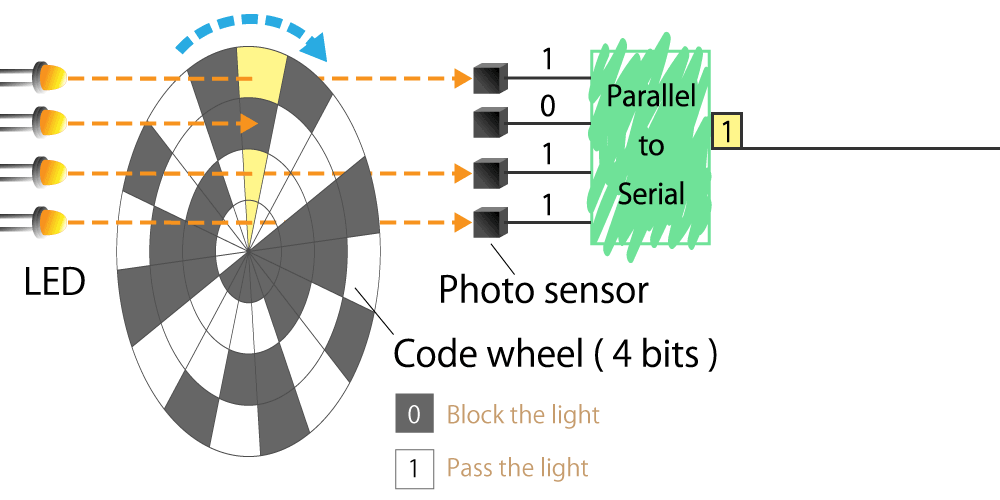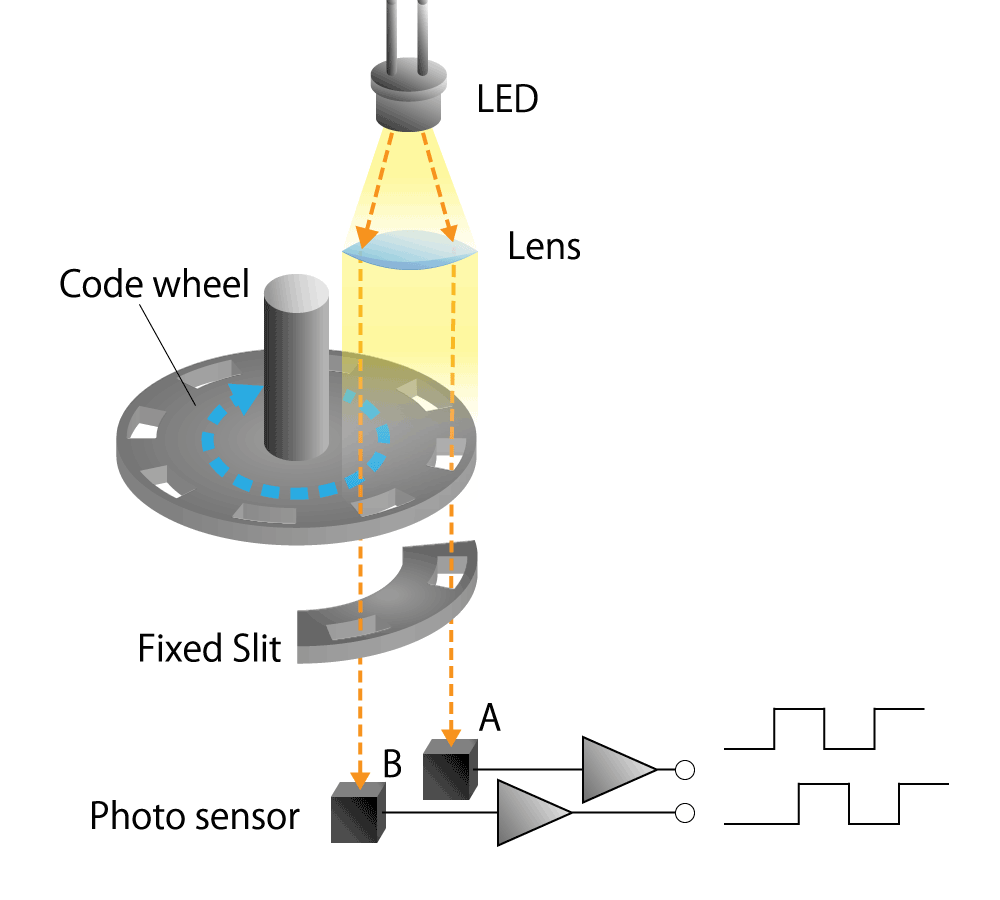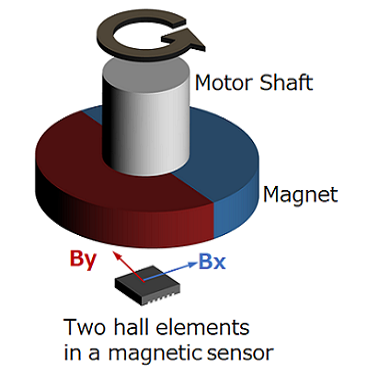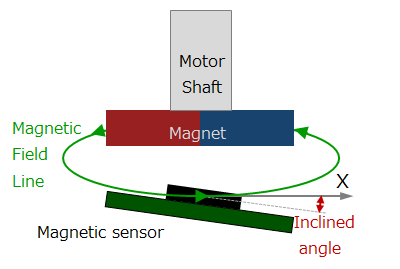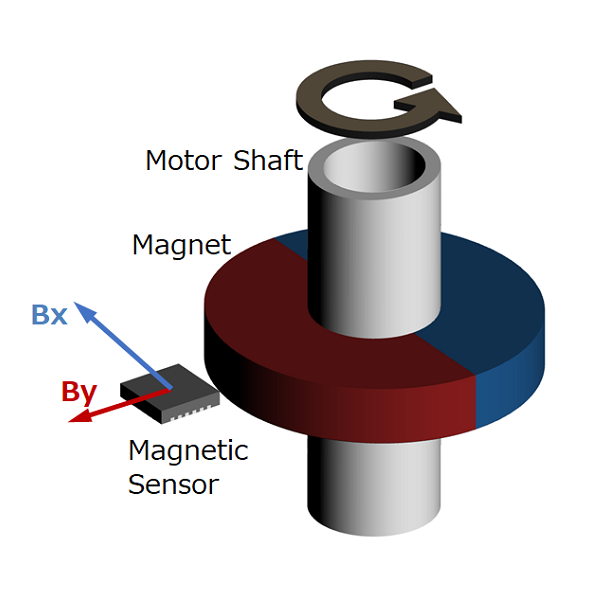FAQ & Glossary
Basic Knowledge of Encoder
FAQ (Frequently Asked Questions)
[Answer 1]
The larger the current that flows through the coil, the stronger the magnetic force and the greater torque that can be generated, thus preventing step-out during high-speed rotation or stationary.
Normally, a maximum current always flows through the coil to create a strong magnetic force so that step-out does not occur.
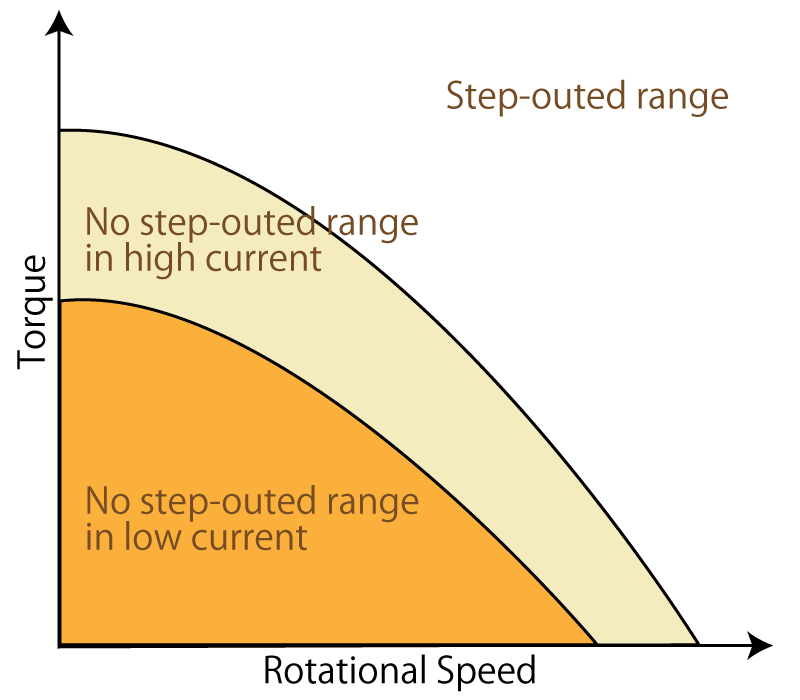 Figure 1. Current and non-step-out range diagram
Figure 1. Current and non-step-out range diagram
Glossary
Here are some technology key words that often appear when you use encoders.
A sensor is an element or electronic component that detects changes in nature. Typical sensors include switches, potentiometers and encoders that detect position, thermistors that detect temperature, photodiodes that detect light, and piezoelectric elements that detect pressure.
There are analog and digital sensors. In the analog type, impedance (resistance, capacitance, inductance), voltage, and current change continuously according to the physical quantity to be detected. The digital type changes with two values of voltage ON / OFF like a switch and high / low voltage like an encoder.
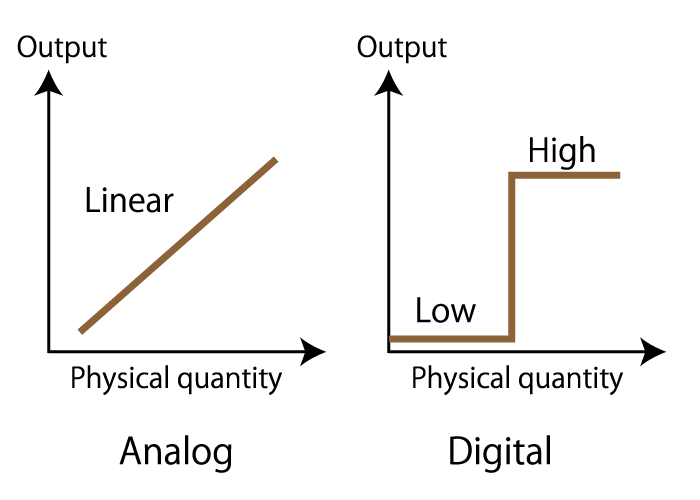 Figure 2. Analog type and digital type
Figure 2. Analog type and digital type
A controller is a control device that judges and processes based on signals from switches and sensors, and has a function to control the movement of actuators. Control by a controller composed of electrical and electronic circuits is called hardware control, and control by a computer program is called software control.
PLCs (Programmable Logic Controllers) have various electric and electronic circuits built in, and can be controlled in various sequences by changing programs, and are used in production facilities such as factories.
Sequence control: Control that performs a series of fixed operations in order.
Actuators are devices that convert various types of energy into mechanical movements such as rotational movement and linear movement.
Typical actuators include motors and sliders.Devices that include a mechanism for rotating or linearly moving using a motor or slider as a power source are called actuators, too. Actuator power sources include hydraulic / pneumatic technology that uses the pressure energy of oil and air, and motors that use electrical energy.
A rotating motor uses an encoder to control the rotation speed and rotation angle, and is used to move machines with high accuracy and speed. With hydraulic pressure, accurate position and speed can be controlled, but it takes time to start moving, so control using an encoder is not used.
Pneumatic pressure does not accurately control position and speed, but is used for automation and labor-saving technologies in factories, etc., by combining simple movements such as forward and backward.
A stepper motor is composed of a magnet attached to a rotating shaft and a fixed coil. It is magnetized by passing a pulse current through the coil and rotates by attracting the rotating shaft magnet.
When the stepper motor rotates faster, the torque (force to rotate the motor) decreases, and the motor cannot follow the pulse speed. This phenomenon is called step-out.
In addition, the phenomenon that the motor rotates unintentionally for some reason when the motor is not rotating is also called step-out.
Basic Knowledge of Encoder










